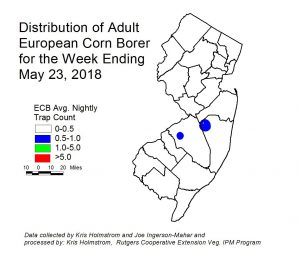Peach:
Oriental Fruit Moth: First generation timings are updated below: According to the model, treatments should be over for the first generation flight statewide. However trap counts at several sites still show captures above the treatment threshold of 6/trap. Pest pressure is quite high on some farms in northern counties. [Read more…]

